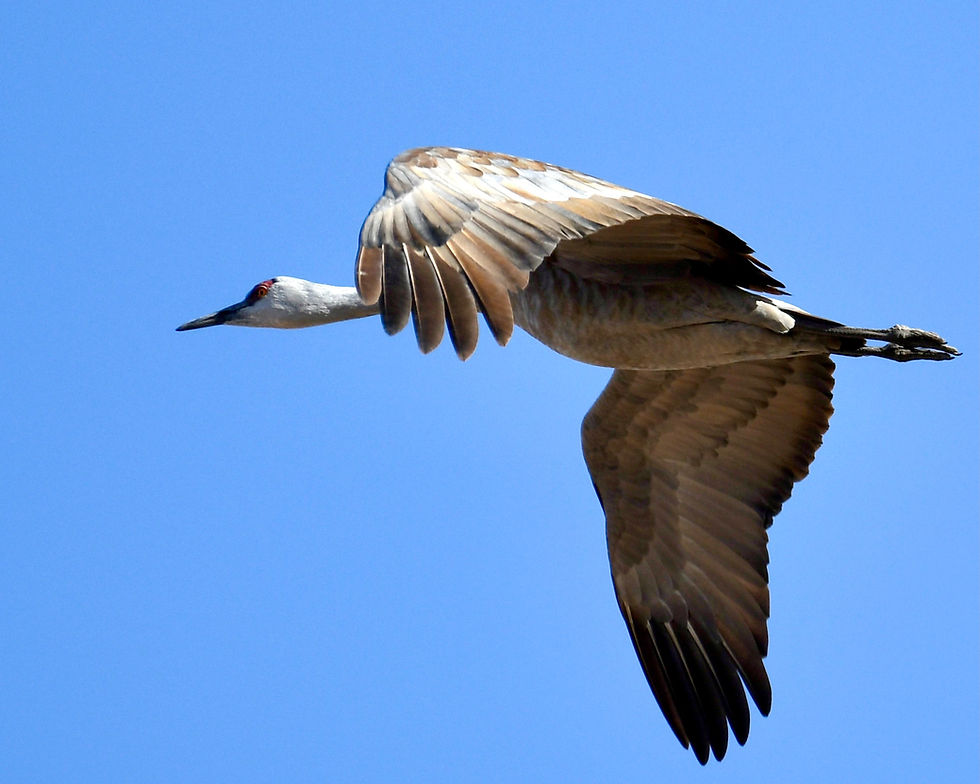Winter Birds of the Panhandle
- Vicki Wilmarth

- Feb 15, 2022
- 3 min read
Updated: Feb 16, 2022

The largest hawk in the United States, the Ferruginous Hawk (above) is just one of many birds that spend their winters in the Texas Panhandle and then head to cooler climates for the summer. Other beloved Panhandle birds, like Painted Buntings, only spend the summer here. Knowing that we only get to see certain birds for a few months every year keeps things interesting for Texas Panhandle birders.
Of course, Bald Eagles are our most celebrated winter resident. I start looking for them around the first of November each year and sadly wave goodbye to them near the end of March. Each year that I have been birding, I've discovered greater numbers of eagles in our area (I think we have at least two dozen in Potter and Randall counties combined this year). I've also started to spot them in new places. For example, in February 2022, I saw one at Southeast Park in Amarillo for the first time. The eagle was able to pry a frozen fish out of the iced over lake and then dodge a bunch of greedy Ring-Billed Gulls trying to steal the eagle's meal.
Rough-legged Hawks, with their sweet faces, dark wrist patches and feathered legs, also reside in the Panhandle only in the winter. They are not nearly as numerous as the Ferruginous Hawks or our year-round residents, the Red-tailed Hawks, so I still feel a thrill when I spot a Rough-legged Hawk.

The fierce fishermen of the raptor world, Ospreys, are considered irregular winter visitors, but we have seen one at Lake Tanglewood on every recent Christmas Bird Count. I've also seen an Osprey at McDonald Lake (in John Stiff Park in Amarillo) several times this winter. Climate change may be influencing them to spend more time here in the winter, instead of sticking to their traditional wintering grounds of South Texas.

The Texas Panhandle is also visited by Sharp-shinned Hawks in the winter. Easily confused with Cooper's Hawks--a slightly larger Accipiter with similar coloring that lives here all year--Sharp-shinned Hawks stalk backyard bird feeders and deftly maneuver through shrubs and trees to take sparrows and other small songbirds. If I can see them perched, I can usually distinguish (warning: cool birding lingo) Sharpies from Coops because the Sharp-shinned Hawks are pudgy, bug-eyed, neckless wonders with skinny shins, while Cooper's Hawks are more sleek, fierce and flat-headed. The three pictures below are all Sharp-shinned Hawks (one mature hawk with its barred rufous breast and the other two immature hawks with streaky plumage).
Snow Geese and Sandhill Cranes are also winter residents, although they usually arrive much earlier than some of the hawks and eagles (by beginning of October). Muleshoe National Wildlife Refuge in Bailey County is one of the most reliable places to see hundreds of Sandhill Cranes during the winter.

For Snow Geese, Rita Blanca Lake in Dalhart is a lovely and easy hike to observe hundreds of these beautiful white birds up close. Actually, I don't think there is any bad time to bird Rita Blanca Lake. It is one of the birding treasures of the Texas Panhandle and well worth making the 1.5 hour drive from Amarillo.

It is a joy to spot a bright Mountain Bluebird in the Texas Panhandle, because they only spend a few winter months here. They love juniper trees and can be found near Palo Duro Canyon, Lake Tanglewood, Timbercreek Canyon and the other "junipery" areas of the Golden Spread.

There are also many smaller and less flashy birds, like the American Pipit, that only show up in the Panhandle in the winter. Pipits are often mistaken for sparrows, but they are tough little birds that nest in the tundra in Alaska and the Arctic Circle. Apparently their appetite for the cold doesn't extend to the winter months in Alaska! Nice to know that at least one creature believes that the Texas Panhandle is more hospitable.

Sadly, some birds that have been reliable winter visitors are being seen much less frequently. Very few Cedar Waxwings or Pine Siskins have been reported in the Texas Panhandle at all this winter. Last year there was an irruption of Pine Siskins and we had thousands throughout our area. But then Pine Siskin salmonella kicked in here and across the rest of the country. We don't know yet how much of the population was decimated by disease, but the dearth of Pine Siskins in our area this year does not bode well.
Of course, I enjoy photographing birds in winter with the snow and ice, regardless of whether those birds are only visiting our area in the winter, or like Northern Cardinals, are plentiful throughout the year. I'm so glad we get a couple of snowfalls each year and some ice on our area lakes so that the backgrounds in my photos are not just green (or worse, brown!).


















































Very enjoyable. I am still a novice, so I will be on the lookout for the winter hawks mentioned here.